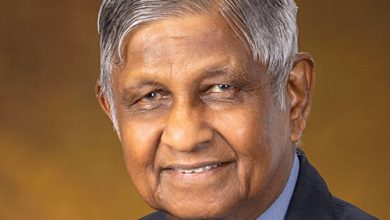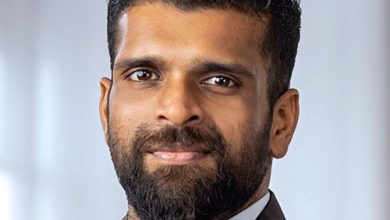LUXURY GOODS

CONSUMER SENTIMENT
THE LAP OF LUXURY
Indrajith Ranawana assesses Sri Lanka’s potential in the luxury goods market
The global luxury goods market has undergone a marked transformation in recent years, driven by shifting consumer demographics and technological advancements. Across the world, millennials and Gen Z consumers now account for a substantial share of luxury spending, prompting brands to rethink their strategies.
“Younger consumers value authenticity, unique experiences and sustainability, shaping the future of luxury retail. As a result, luxury retailers are increasingly investing in generative artificial intelligence to enhance customer personalisation and operational efficiency. By leveraging AI driven insights, brands can tailor marketing strategies and improve customer service, ensuring a more seamless and engaging shopping experience,” notes Indrajith Ranawana.
CONSUMER TRENDS “Luxury consumers worldwide including here in Sri Lanka are prioritising personalised experiences and exclusivity. Bespoke services and curated collections are becoming more prevalent, catering to the growing demand for uniqueness as luxury consumers increasingly seek products that reflect their individuality,” he explains.
As digital transformation accelerates, luxury retailers are expanding their online presence to reach a broader audience.
“Luxury retailers in Sri Lanka are leveraging digital platforms to showcase their products globally, transcending geographical limitations. This enables local brands to compete with international names while ensuring greater accessibility to high-end products,” he asserts.
CUSTOMER EXPECTATIONS The luxury goods sector is also embracing sustainability and ethical sourcing, aligning with evolving consumer expectations and regulatory requirements.
Ranawana says: “Luxury watch brands are prioritising sustainability by enhancing supply chain transparency and supporting responsible material sourcing. Many luxury brands now publish sustainability reports outlining their commitments to responsible sourcing, environmental management and ethical labour practices.”
“A growing number of luxury brands are incorporating sustainable materials into their designs, demonstrating a commitment to environmental consciousness. These efforts include using ethically sourced metals and reducing energy consumption in manufacturing processes,” he adds.
HIGH GROWTH POTENTIAL Despite its potential, the luxury goods market faces challenges – particularly against a backdrop of tax reforms. While the local luxury segment is relatively small compared to major regional markets such as China, Japan and India, it offers notable opportunities for expansion.
“Sri Lanka’s luxury market exhibits great potential with a projected annual growth rate of 2.40 percent from 2025 to 2029. Luxury fashion remains the leading segment in Sri Lanka while watches, jewellery, automobiles and real estate also show promise,” Ranawana opines.
He adds that “the hospitality sector contributes to growth with high-end resorts and fine dining attracting affluent visitors.”
“Sri Lanka’s strategic location, expanding middle class and the established presence of global brands makes it an attractive destination for luxury investments. Additionally, the growing luxury market, an affluent consumer base and favourable business climate position Sri Lanka as a promising destination for luxury brands seeking growth in South Asia,” he avers.
LEVERAGING TOURISM In a bid to boost high-end shopping, Sri Lanka can implement policies that incentivise luxury tourism, he claims, through “tax incentives such as VAT refunds for international visitors, enabling Sri Lanka to compete with neighbouring luxury markets. Offering such benefits would make Sri Lanka a more appealing destination for luxury shoppers.”
“Infrastructure and regulatory improvements are also crucial. The government can offer tax breaks and reduced import duties to attract global luxury brands. Strengthening intellectual property laws would also ensure brand protection, making Sri Lanka a safer market for high-end investments,” he points out.
INVESTMENT TRENDS In Sri Lanka, high-end watches, jewellery and motor vehicles are more than mere status symbols – they’re viewed as long-term investments.
Ranawana explains: “Luxury goods are perceived as appreciating assets, driving demand in categories such as fine jewellery and timepieces. However, economic uncertainties can influence buying behaviour with affluent consumers delaying purchases during periods of instability.”
As he notes, Sri Lanka’s luxury market is valued between US$ 500 million and one billion dollars, depending on segmentation.
“The number of high-net worth individuals (HNWIs) in Sri Lanka has been steadily increasing, with an estimated 8,000 to 10,000 individuals now classified as HNWIs. This growing demographic continues to fuel demand for high-end products,” he elaborates.
Luxury consumption is evolving beyond material goods with affluent consumers increasingly seeking unique experiences. He observes: “The shift toward experiential luxury is becoming more pronounced, particularly among younger consumers who value travel, fine dining and art over traditional luxury goods.”
This trend has led luxury retailers to focus on curated experiences that cater to the desire for personalisation and exclusivity. “We are working towards offering unique curated experiences that align with the growing demand for experiential luxury,” he reveals.
REGIONAL HUB Sri Lanka’s natural beauty, rich cultural heritage and growing luxury hospitality sector make it an emerging destination for high-net worth travellers.
“Luxury hotels, ecotourism retreats and high-end spas are positioning Sri Lanka as a top choice for affluent travellers. Moreover, the development of premium retail spaces is enhancing the luxury shopping experience. The rise of high-end shopping malls and retail hubs is fuelling market expansion,” Ranawana asserts.
Global luxury markets are experiencing dynamic shifts, influenced by regional economic trends, evolving consumer behaviours and technological advancements. In China, the largest luxury market in Asia, demand is being driven by affluent millennials and Gen Z consumers who prioritise exclusivity, digital engagement and sustainable luxury.
The US remains a key player with a strong demand for high-end fashion, automobiles and experiential luxury, while Europe continues to be a global luxury hub particularly in France and Italy where heritage brands thrive.
Meanwhile, markets in the Middle East – particularly the UAE and Saudi Arabia – are expanding rapidly. In emerging markets such as India and Southeast Asia, rising disposable incomes and increasing brand awareness are driving luxury consumption, making these regions prime targets for global luxury brands looking to expand.
With strategic policy changes, investment incentives and a focus on experiential luxury, Sri Lanka has the potential to become a key player in the South Asian luxury market.
As the sector adapts to shifting consumer preferences, digital transformation and sustainability demands, Sri Lanka’s luxury goods market is poised for notable growth in the years ahead.









